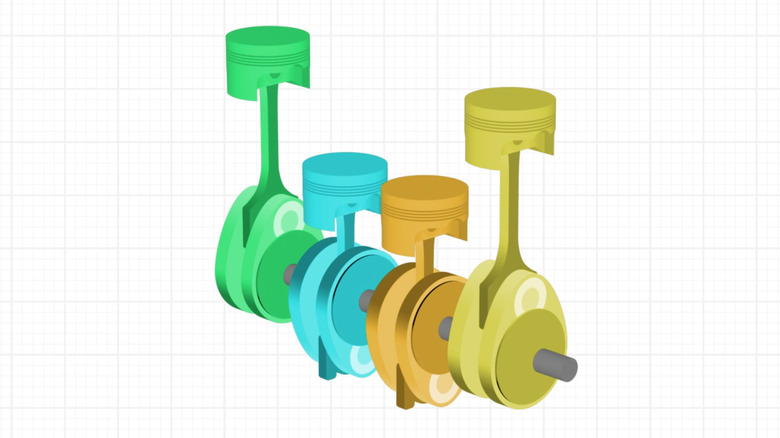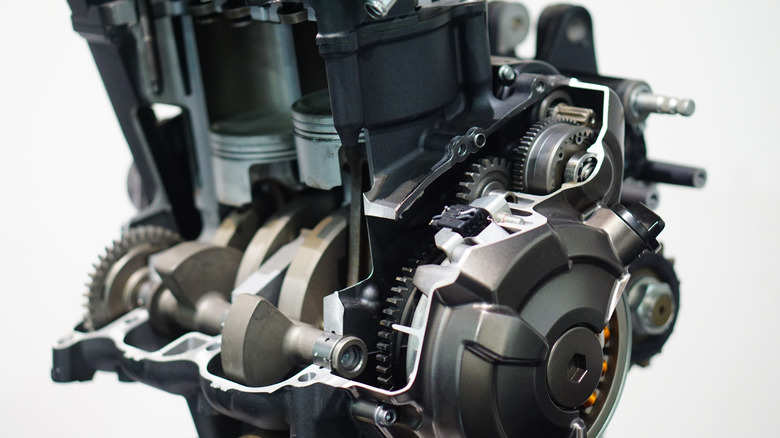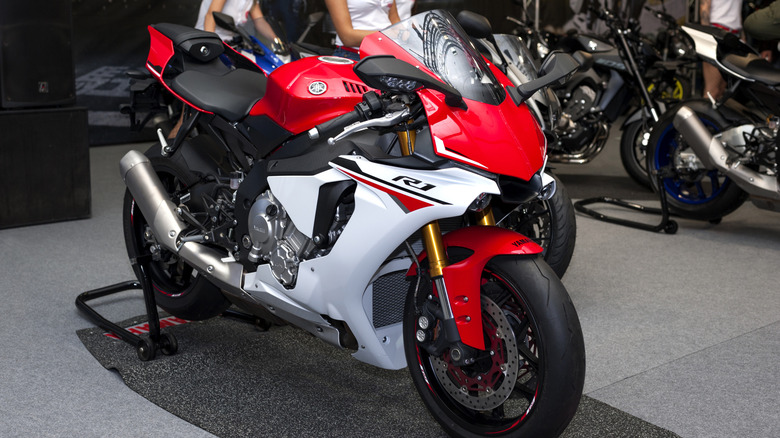High-Performance Yamaha Motorcycles Use Crossplane Crankshaft Engines - Here's Why
Most inline-four engines use a flat-plane crank, meaning two pistons rise while two fall, giving perfect primary balance and even 180-degree firing intervals. Yamaha broke from this in 2009 with the YZF-R1, introducing a crossplane crankshaft that spaces crankpins at 90 degrees, and revolutionizing high-performance motorcycles in the process. The result is an uneven 270°–180°–90°–180° firing sequence instead of the flat plane's predictable 180° rhythm. That change removes most of the inertial torque, the pulsing crank speed variation caused by all pistons hitting top or bottom dead center at the same time.
By stabilizing crank rotation, Yamaha claims riders feel pure combustion torque through the throttle. In practice, that means smoother delivery, clearer traction feedback, and less wheelspin when exiting corners. The design also gives the R1 and MT-10 their distinctive, loping exhaust note that riders often compare to a V4. The tradeoff is added weight and complexity, since balance shafts are required to tame vibration. Even so, Yamaha remains the only manufacturer to bring a crossplane inline-four to mass production, betting that real-world ride feel is worth the engineering effort.
Why Yamaha expanded crossplane tech to twins and triples
After MotoGP success, Yamaha applied the same thinking to smaller engines. The CP2 parallel twin, found in the MT-07, Tenere 700, and R7, uses a 270-degree crankshaft. This layout mimics a 90-degree V-twin's firing order, producing improved grip and a sound riders prefer over the buzzier 180-degree twins. It also cuts down on inertial torque, making throttle response more predictable. Similarly, the CP3 triple in the MT-09 (here's how fast it is and its horsepower) and Tracer 9 uses 120-degree spacing.
Yamaha brands it under the "crossplane" (not to be confused with flat-plane) family, even though most three-cylinder engines already use that arrangement. The point is consistent: engines that don't just meet emissions and performance needs but also offer distinct feedback. While other brands like Suzuki stick with flat cranks or conventional layouts, Yamaha doubled down on marketing the crossplane idea as central to their lineup. The result is an engine family with consistent DNA across twins, triples, and fours.
The future of crossplane in performance motorcycles
The crossplane concept works, but its place in Yamaha's future isn't guaranteed. In racing, the R1's crossplane four has shown mixed results. It offers grip advantages, yet it hasn't consistently beaten conventional inline-fours in Superbike racing, nor the V4s dominating MotoGP. Recent reports suggest Yamaha is already developing a V4 MotoGP engine, possibly to replace the inline-four before the 2026 rule change. That raises questions about the R1's future as stricter Euro 5+ emissions cut down on high-revving fours.
Parallel twins are filling the gap, with the CP2 and Suzuki's new 270-degree twins showing how manufacturers are adapting. Yamaha may continue producing the crossplane inline-four in limited track-only models, but the main growth is likely in twins and triples, which balance emissions compliance with rider-friendly performance. No matter what happens at the top end, Yamaha's crossplane branding has shaped how riders think about engine feel. It turned a crankshaft layout into a performance identity, one that still separates Yamaha from rivals, even as the market moves toward efficiency and new regulations.


